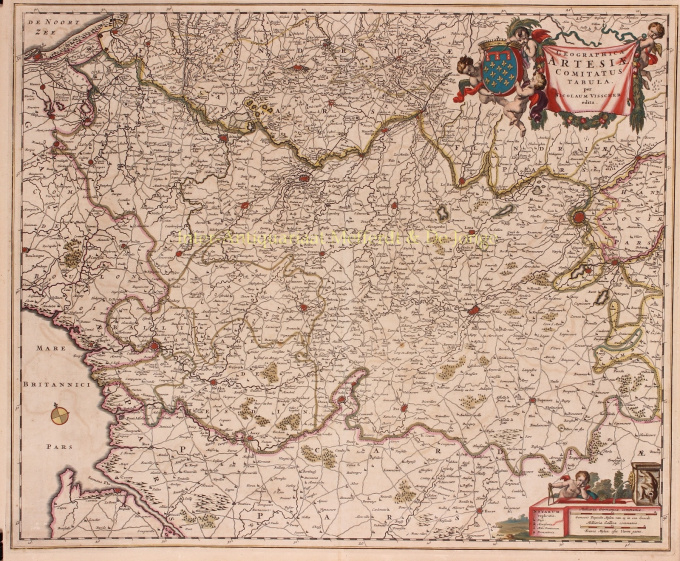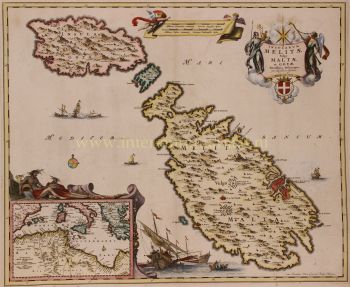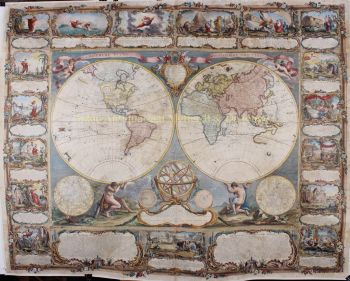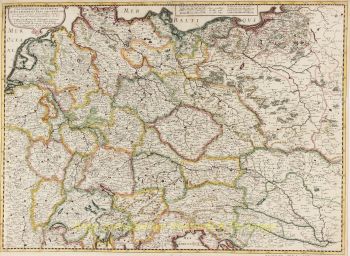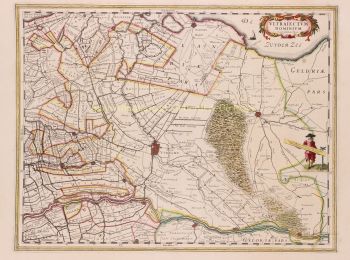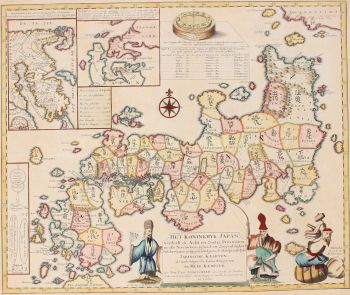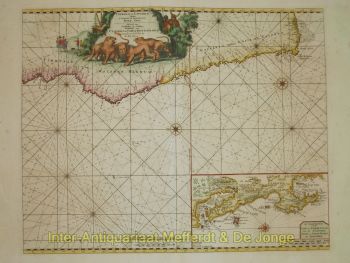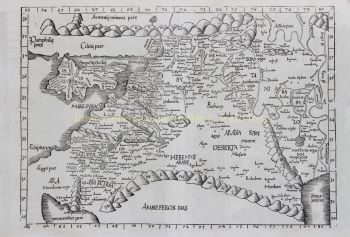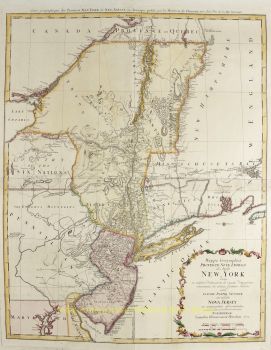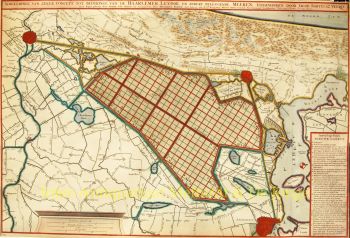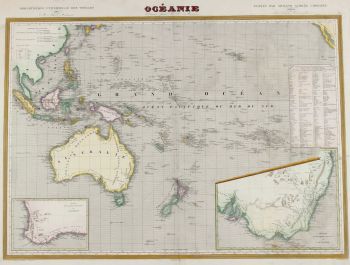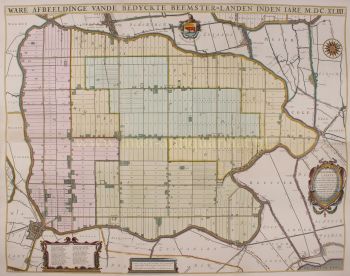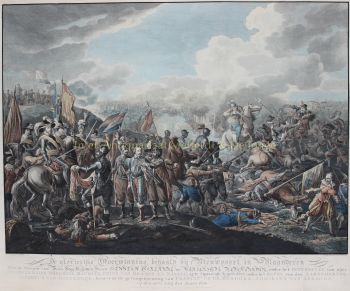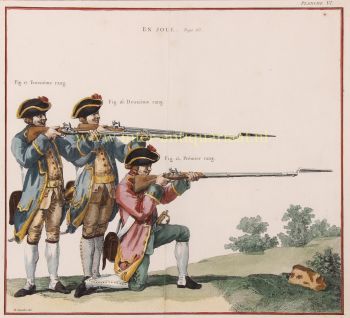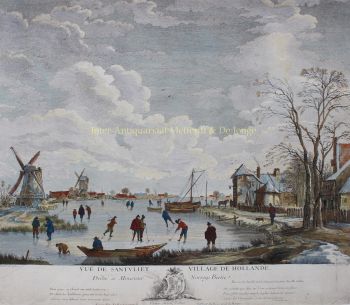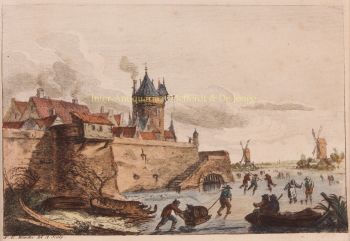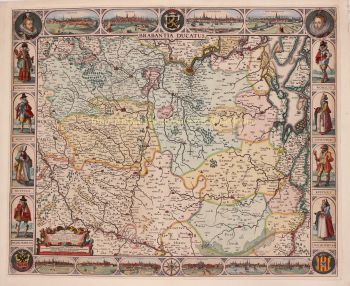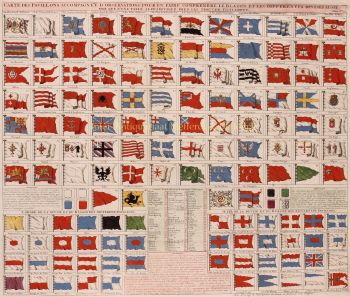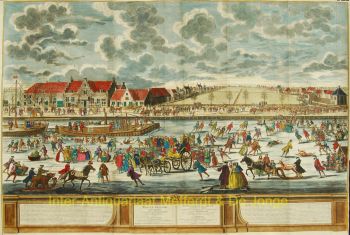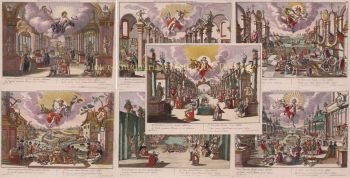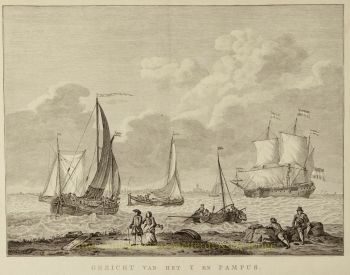Artois 1656
Nicolaes Visscher
€ 175
Inter-Antiquariaat Mefferdt & De Jonge
- Sobre arte
GRAAFSCHAP ARTESIA (ARTOIS) "Geographica Artesiae Comitatus Tabula", copper engraving published in Amsterdam by Nicolaes Visscher I as part of his "Atlas Contractus" between 1656-1677. Verso: blank. Coloured by hand in time. Dim. 46.6 x 56.3 cm. The County of Artesia was one of the Seventeen Provinces in the 16th century. Artesia played an important role at the beginning of the Eighty Years' War. Together with Hainaut, Artesia took the initiative for the Southern Union of Atrecht (Arras). Although the Flemish and Brabant cities sided with the northern Union of Utrecht, the division of the Netherlands had begun, with a northern part striving for independence from the Spanish king and a southern part wishing to remain with the Spanish empire. At the end of the Eighty Years' War, Artesia was conquered from the Spaniards by the French. At the Peace of the Pyrenees in 1659, Artesia was definitively allocated to France. At the top right, putti carry a banderole with the title of the map and the county's coat of arms. A dreamy putto with compass rests on the legend and scale bars bottom right. Price: Euro 175
- Sobre artista
Nicolaes era o único filho de Claes Jansz. Pescador. Ele também é conhecido pelos nomes: Nicolaas ou Claes Claesz. Depois de anos trabalhando para seu pai no negócio, ele o sucedeu após sua morte em 1652. Em 1662 ele foi admitido na guilda dos livreiros de Amsterdã e em 1677 Nicolaes, agora um respeitado editor, recebeu uma patente de 15 anos dos estados da Holanda e da Frísia Ocidental para a impressão e publicação de mapas. Ele morreu dois anos depois e foi enterrado na mesma capela que seu pai.
As edições do Atlas de Nicolaes I incluíram:
"Atlas Contractus Orbis Terrarum" de 1657.
“Germânia Inferior” de 1663.
“Atlas Menor” de 1675.
Os atlas de Visscher eram frequentemente compilados de acordo com os desejos dos compradores (o chamado Atlas Contractus). Eles geralmente não contêm texto, apenas às vezes um índice impresso. Cartões de outros fabricantes foram usados, autogravados e trabalhados em placas de cobre de seu pai.Um dos destaques da cartografia do século XVII é o mapa de parede de várias páginas. Exemplo disso - de 1656 - é o mapa da Zelândia: “Zelandiae Comitatus novissima Tabula”. Este consistia em nove folhas que juntas tinham um tamanho de 140 x 160 cm. Ao adicionar paisagens urbanas, o mapa pode ser ampliado ainda mais. Essas paisagens urbanas foram, por sua vez, publicadas por volta de 1668 sob o nome: “Speculum Zelandiae”.
Você está interessado em comprar esta obra de arte?
Artwork details
Related artworks
- 1 - 4 / 4
Artista Desconhecido
A large wall map of Asia by Nicolas de Fer 1647 - 1720
Preço em pedidoZebregs & Röell - Fine Art - Antiques
1 - 4 / 24- 1 - 4 / 12

